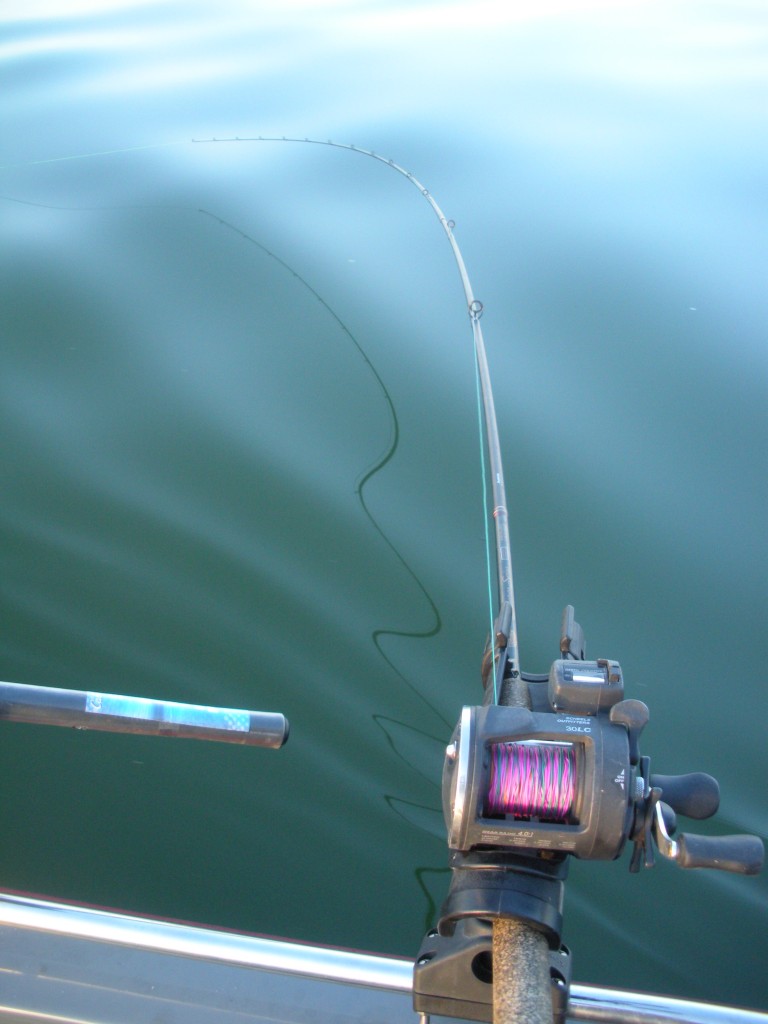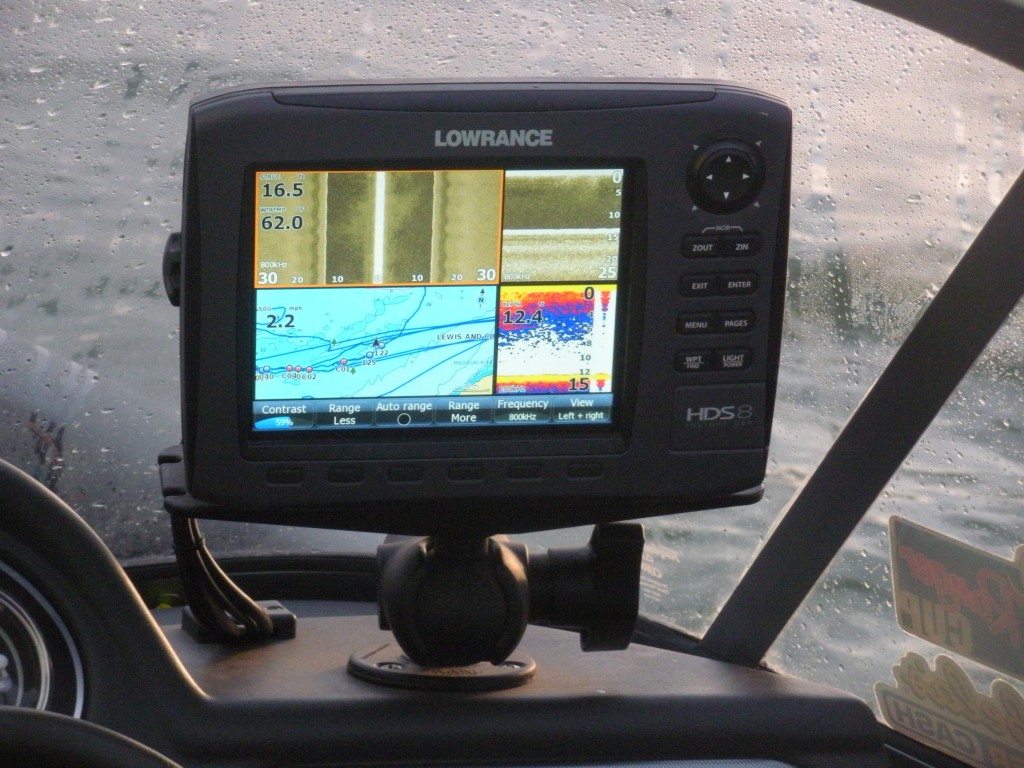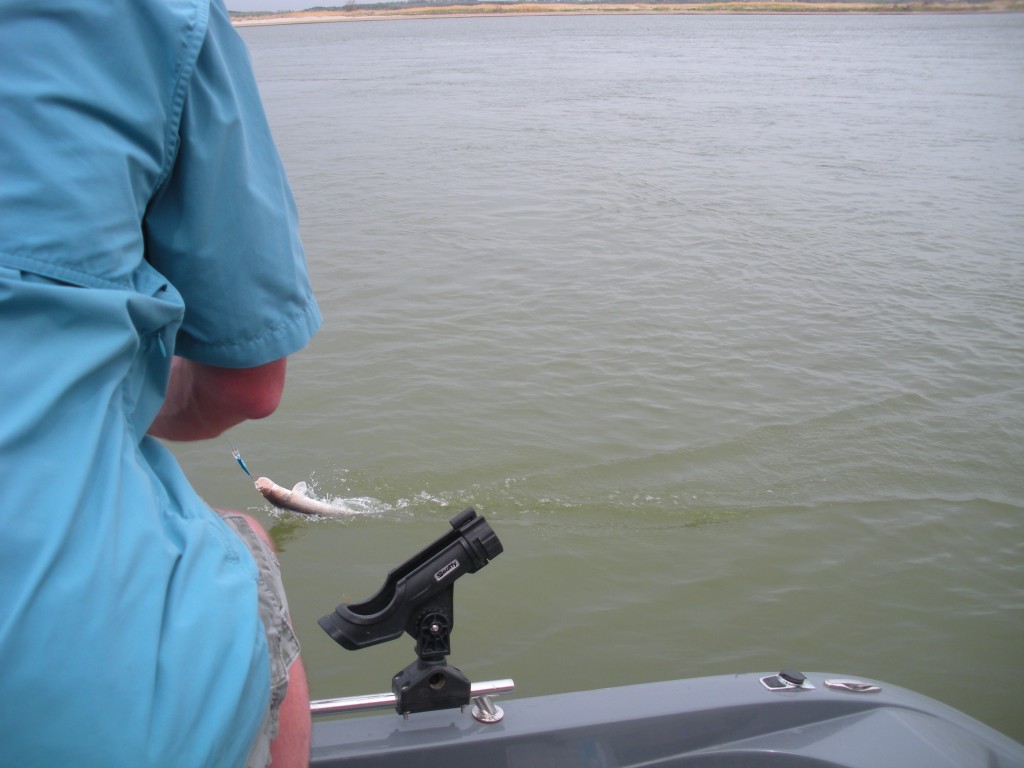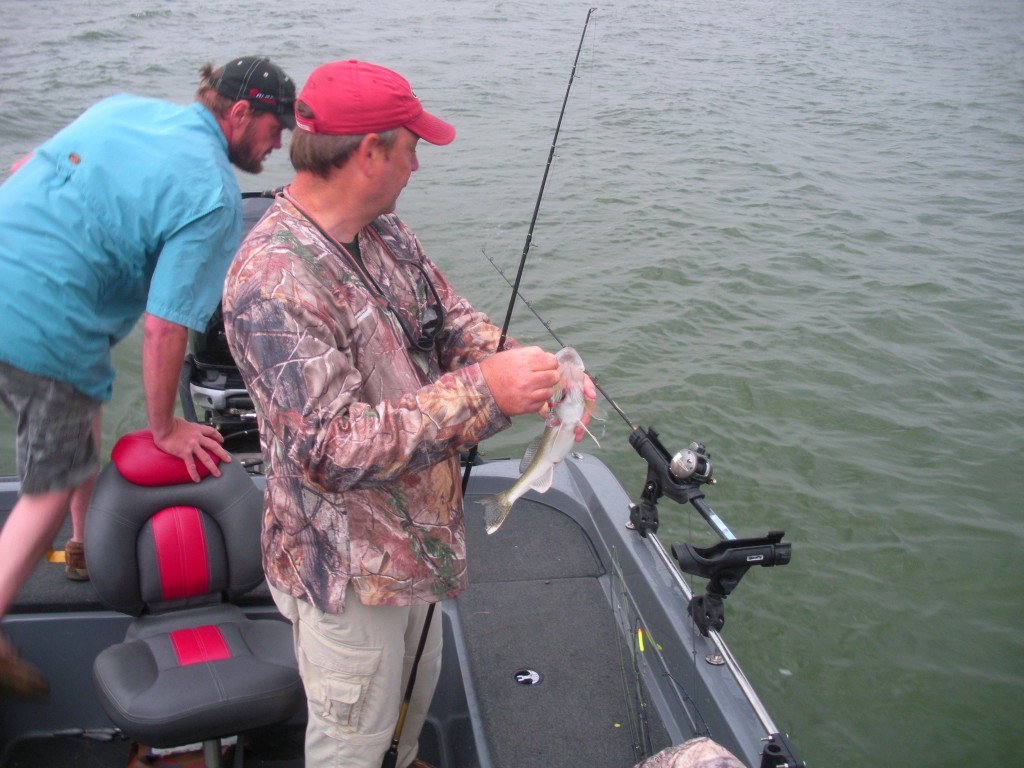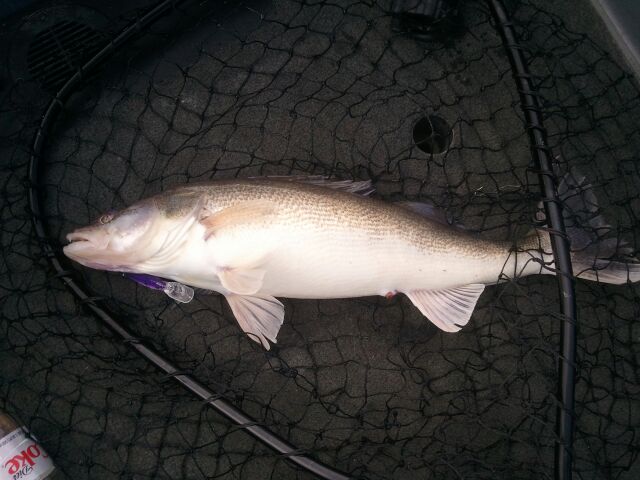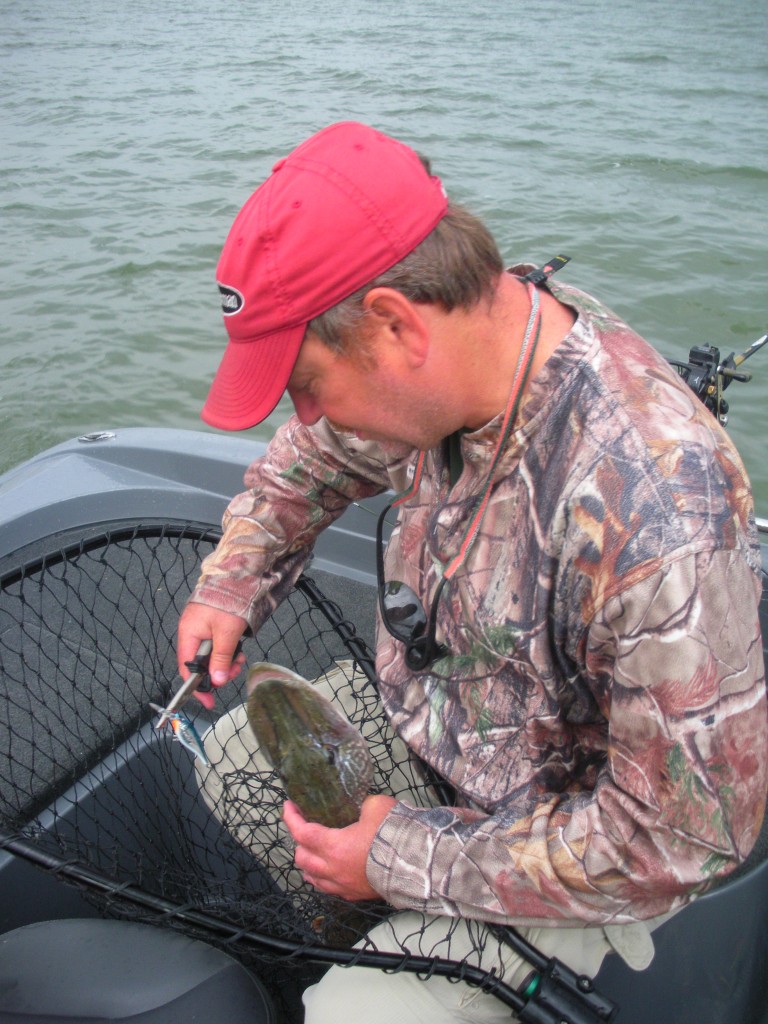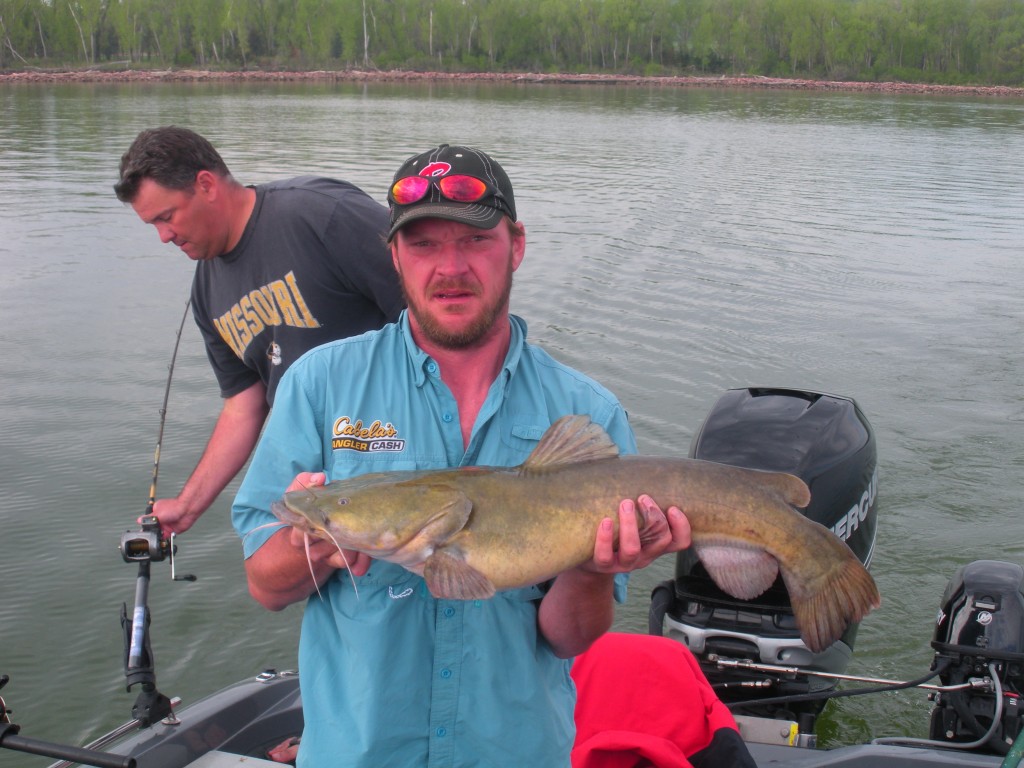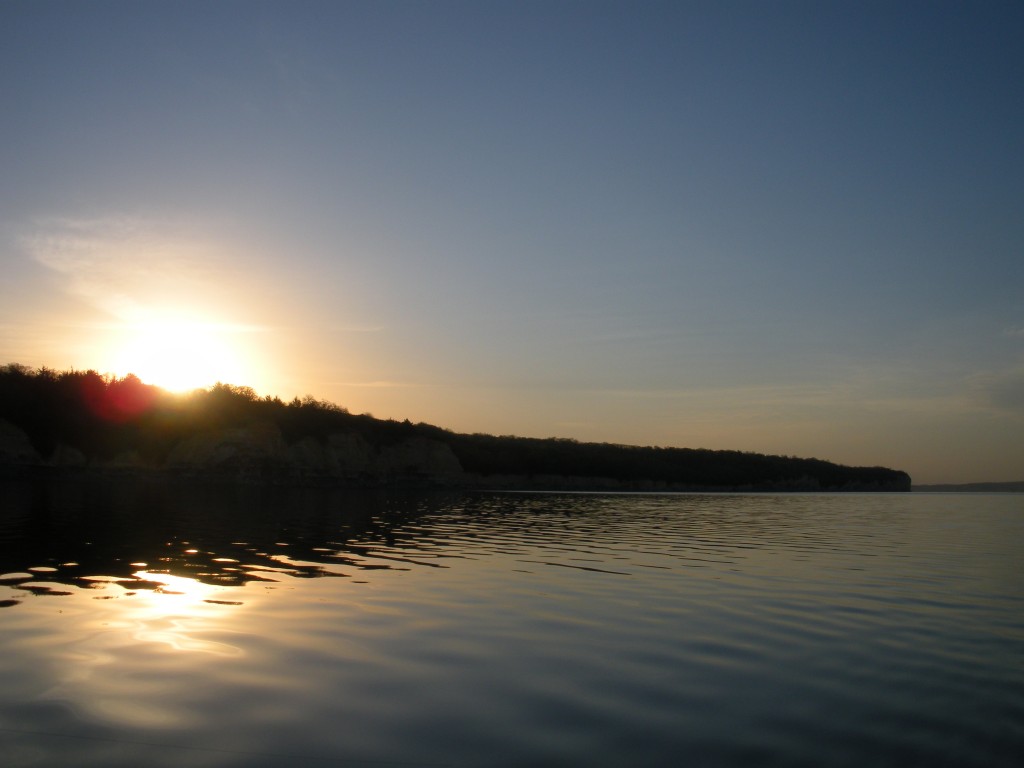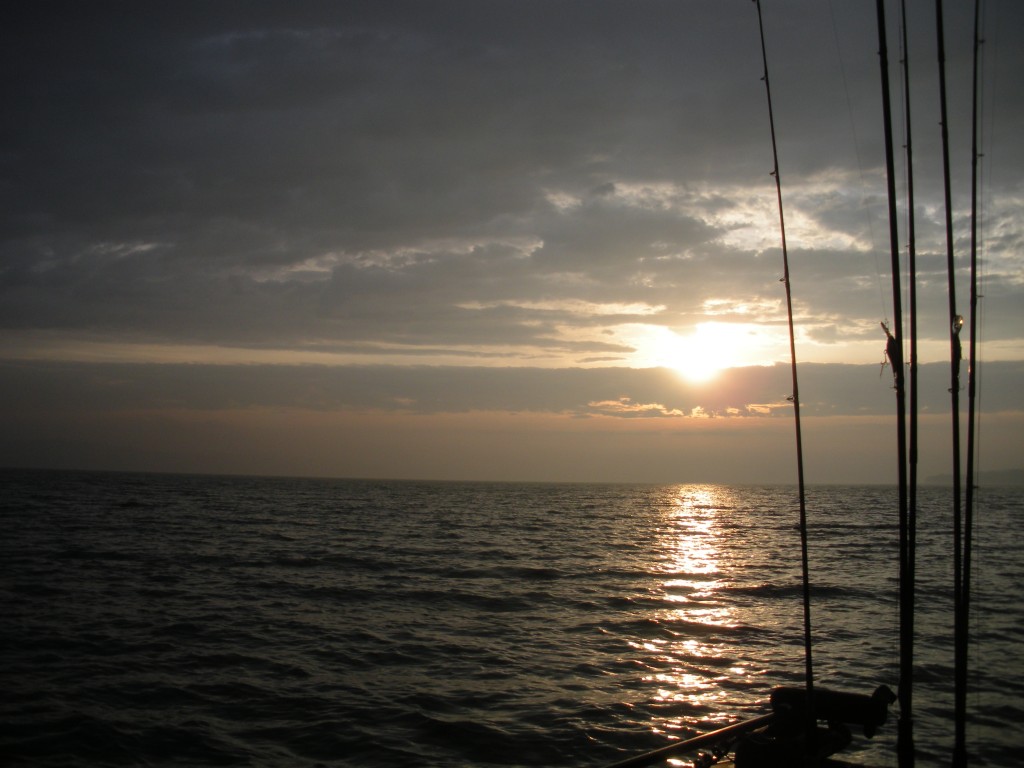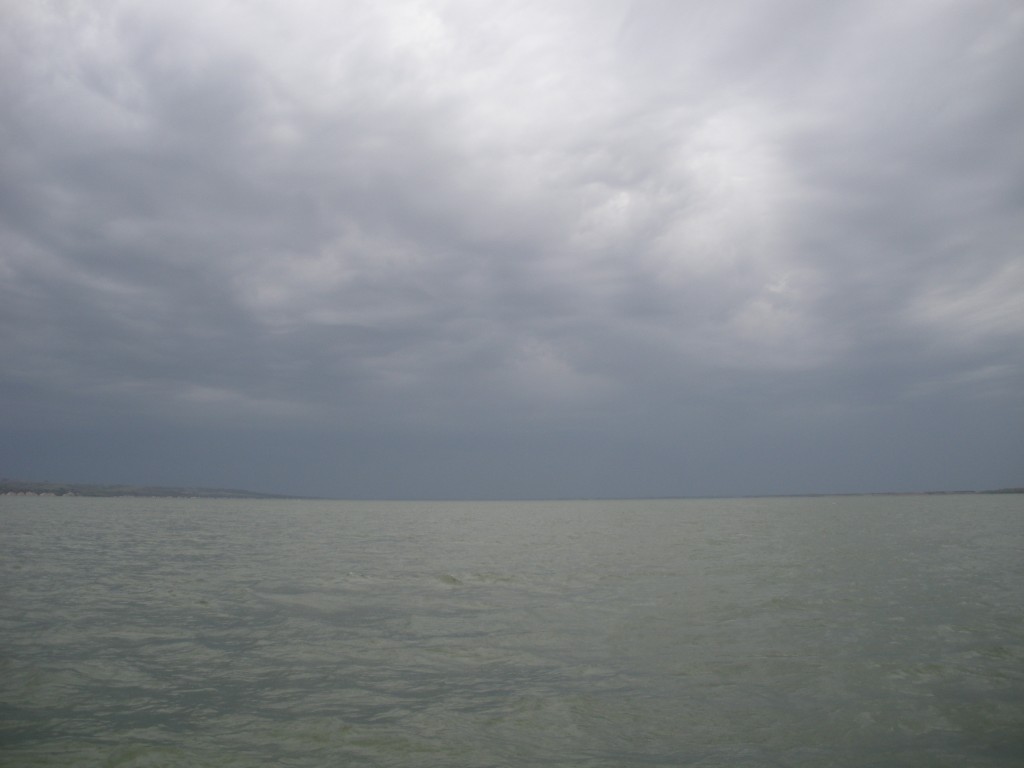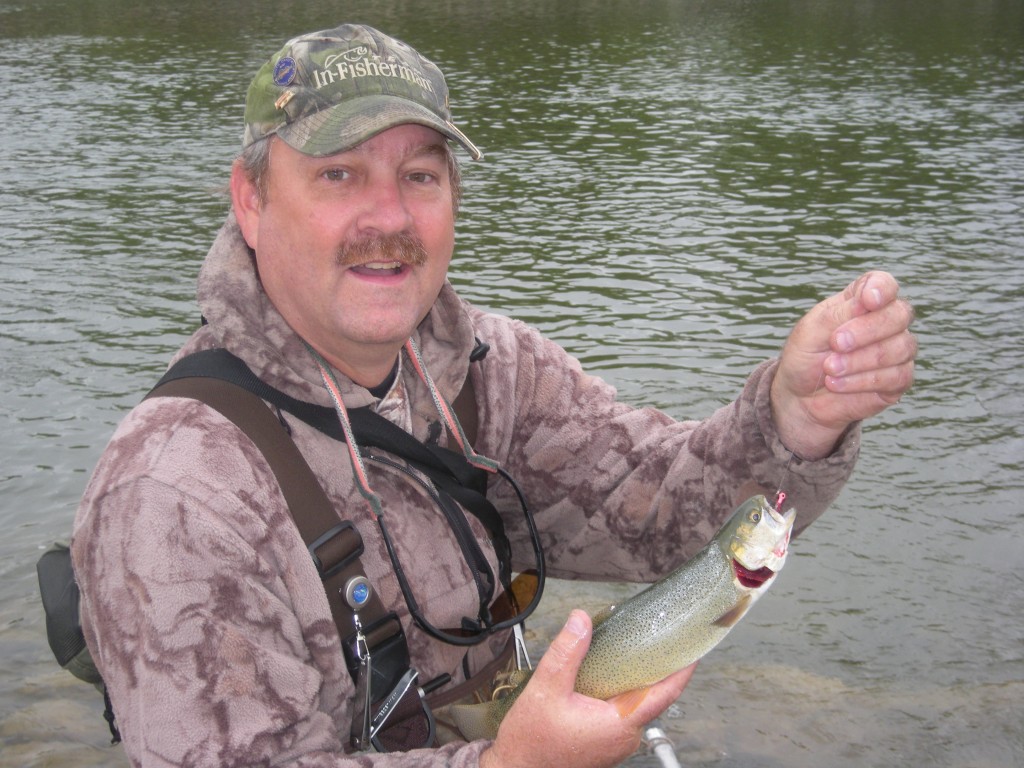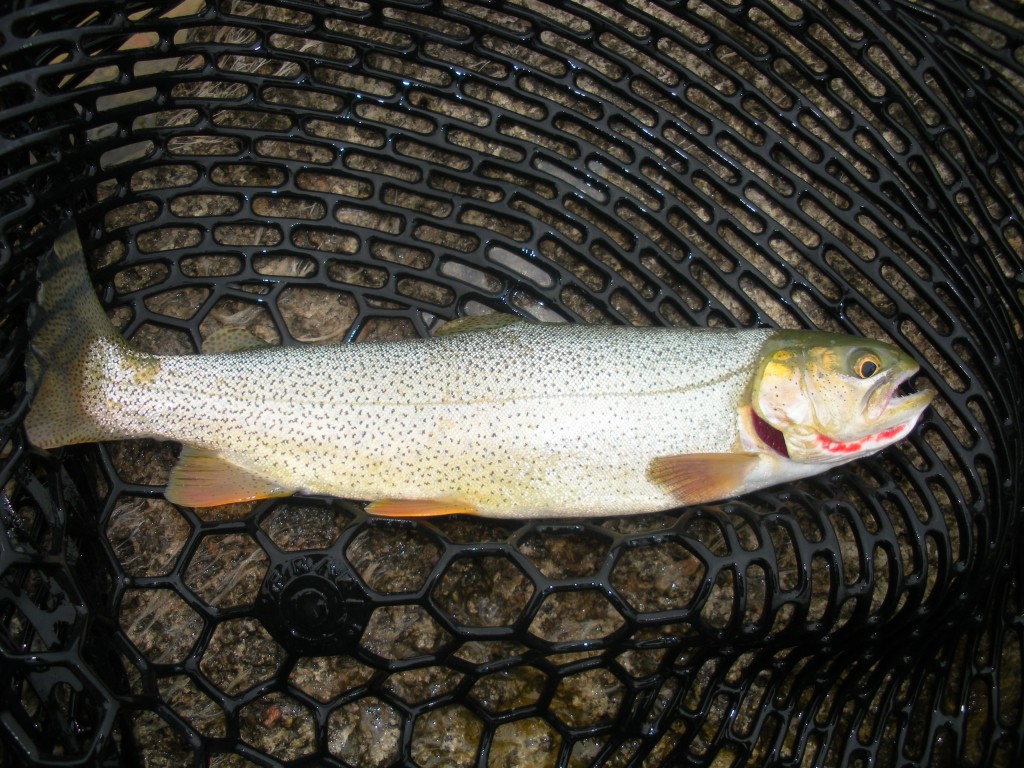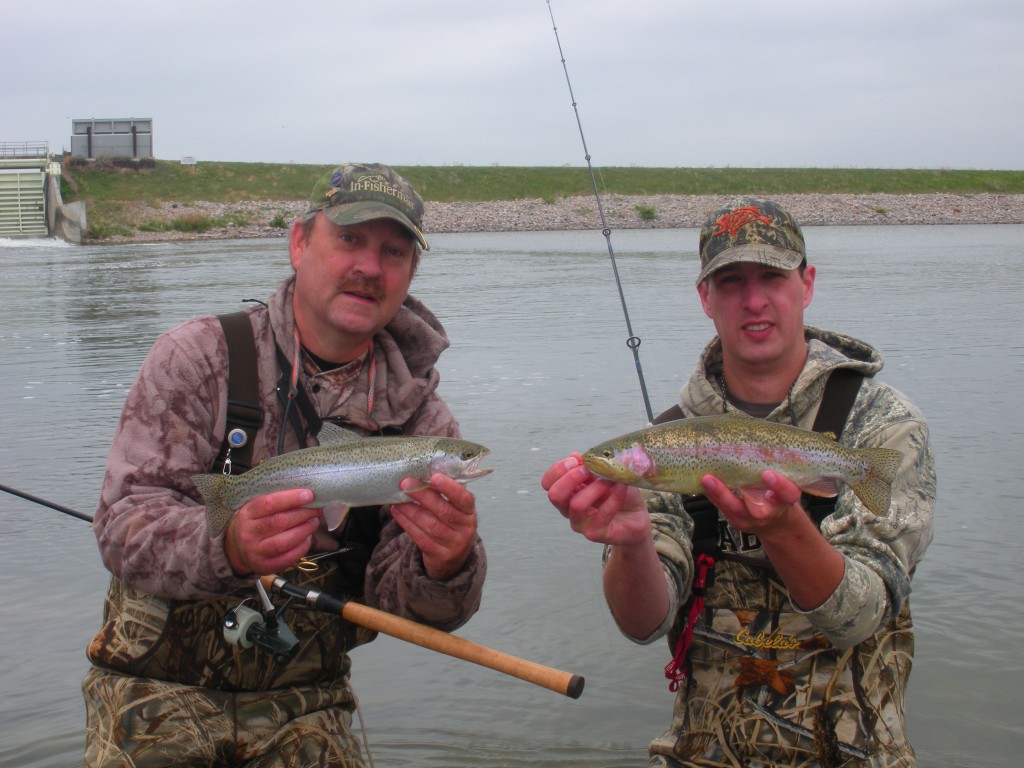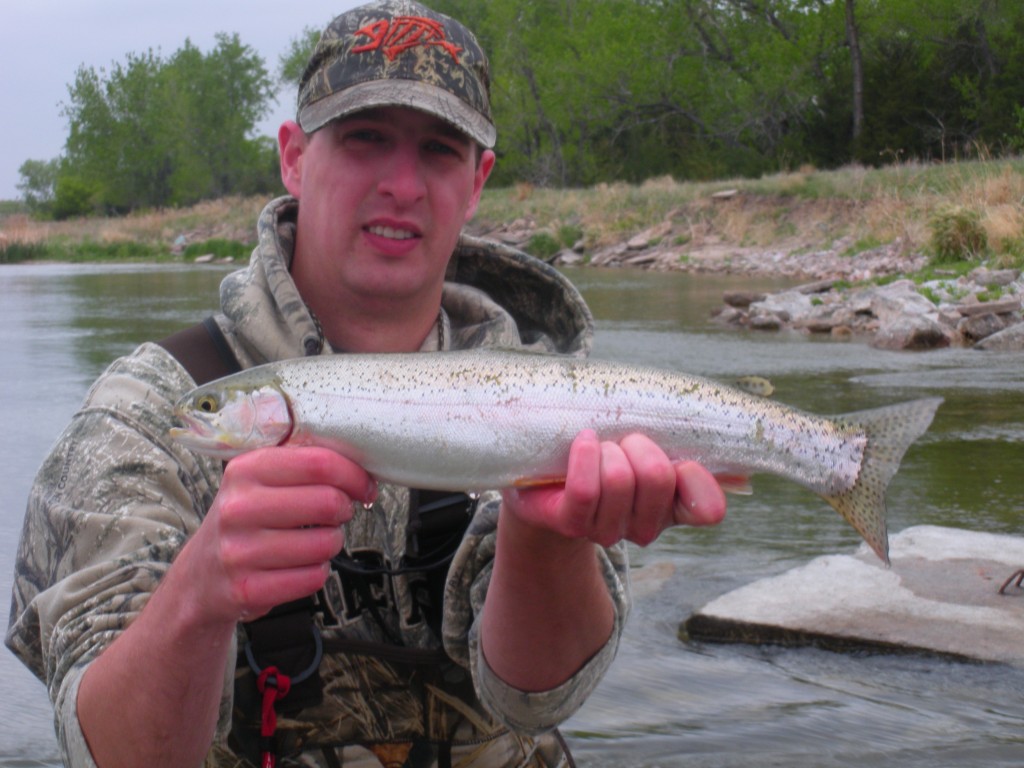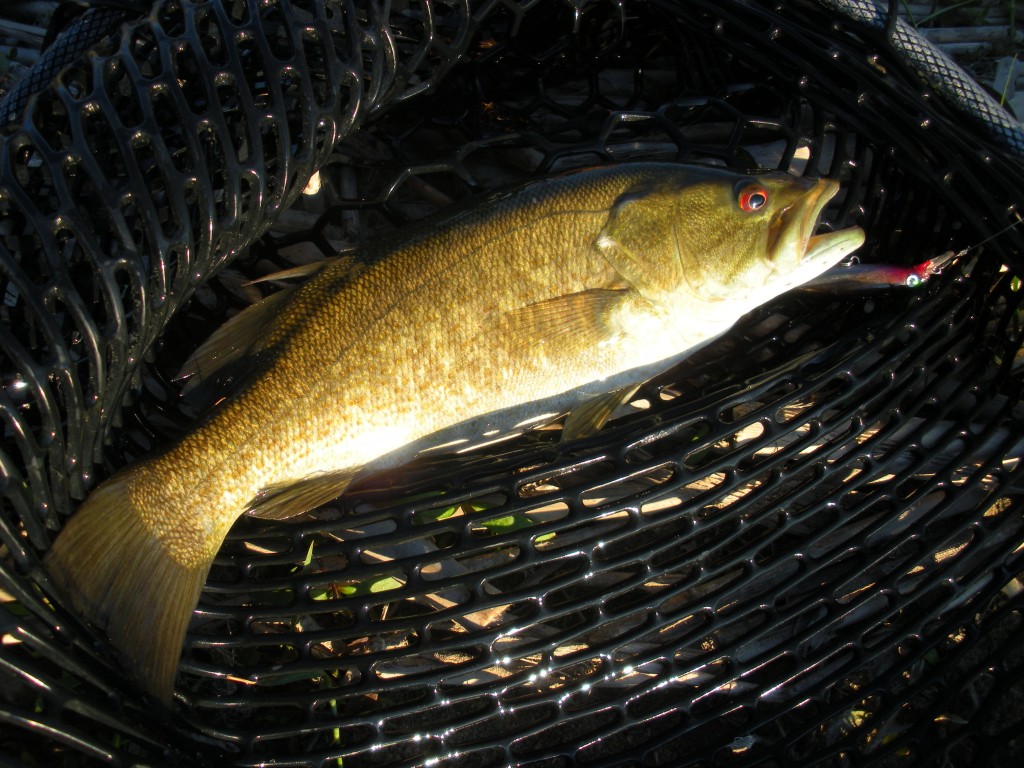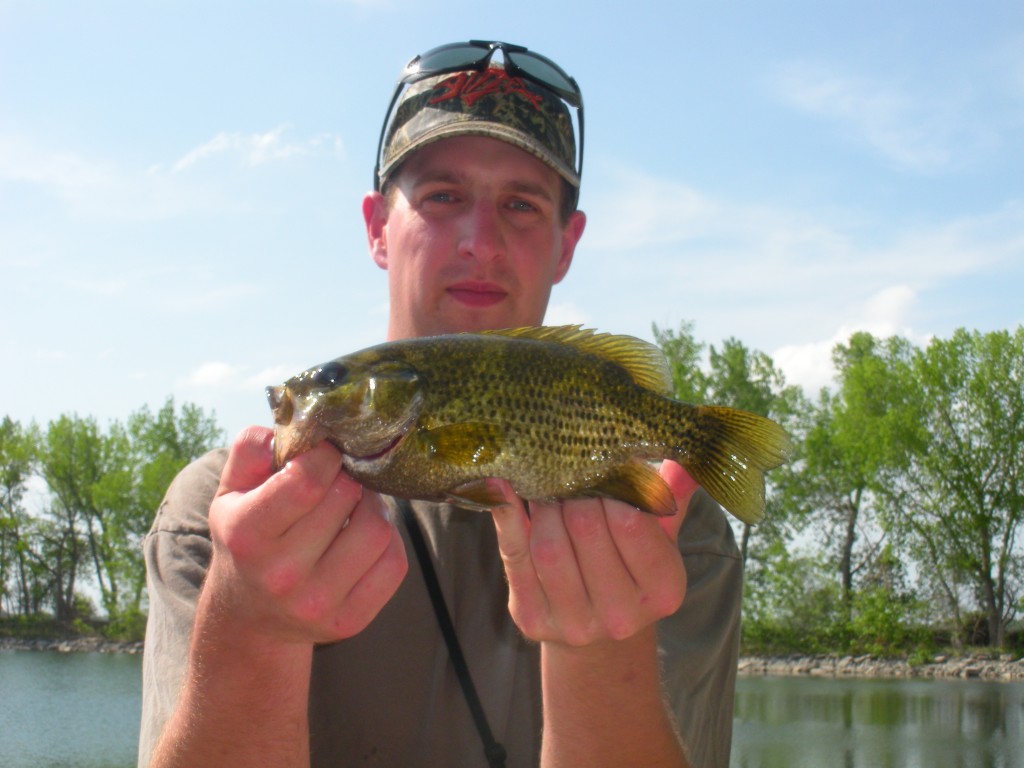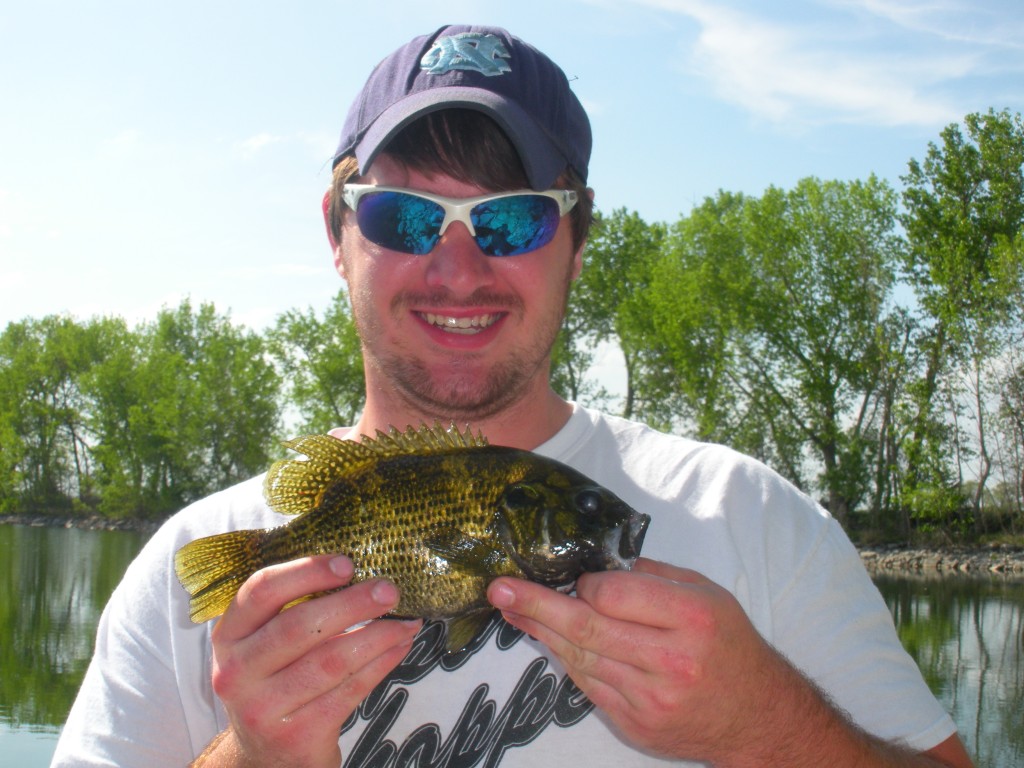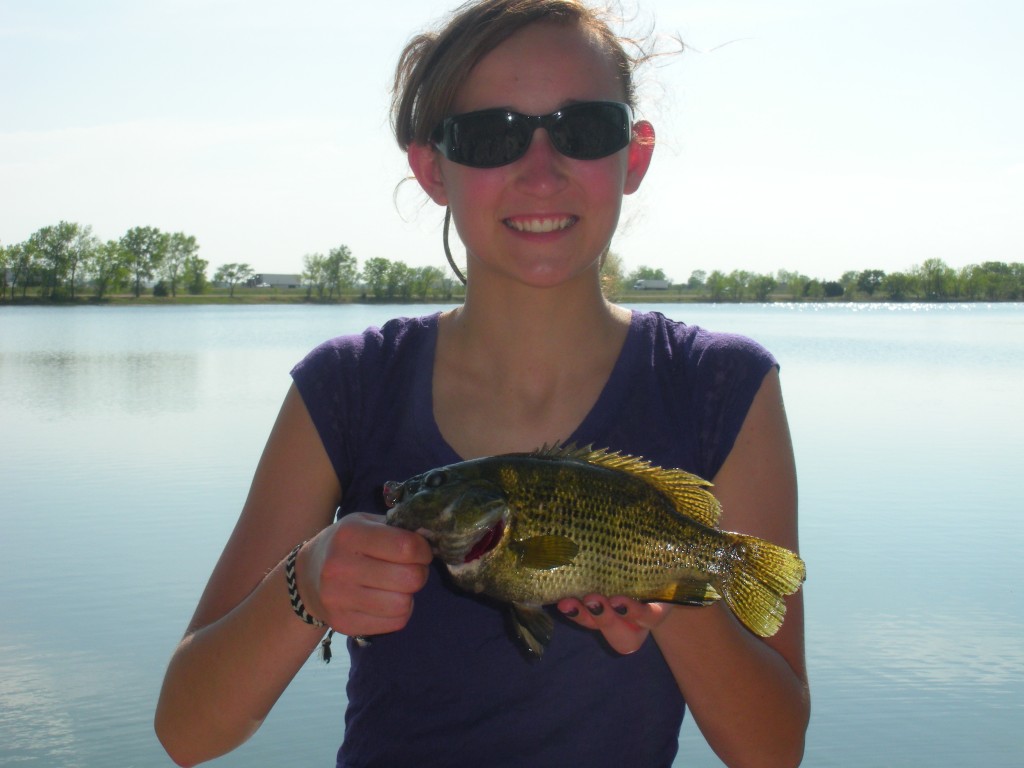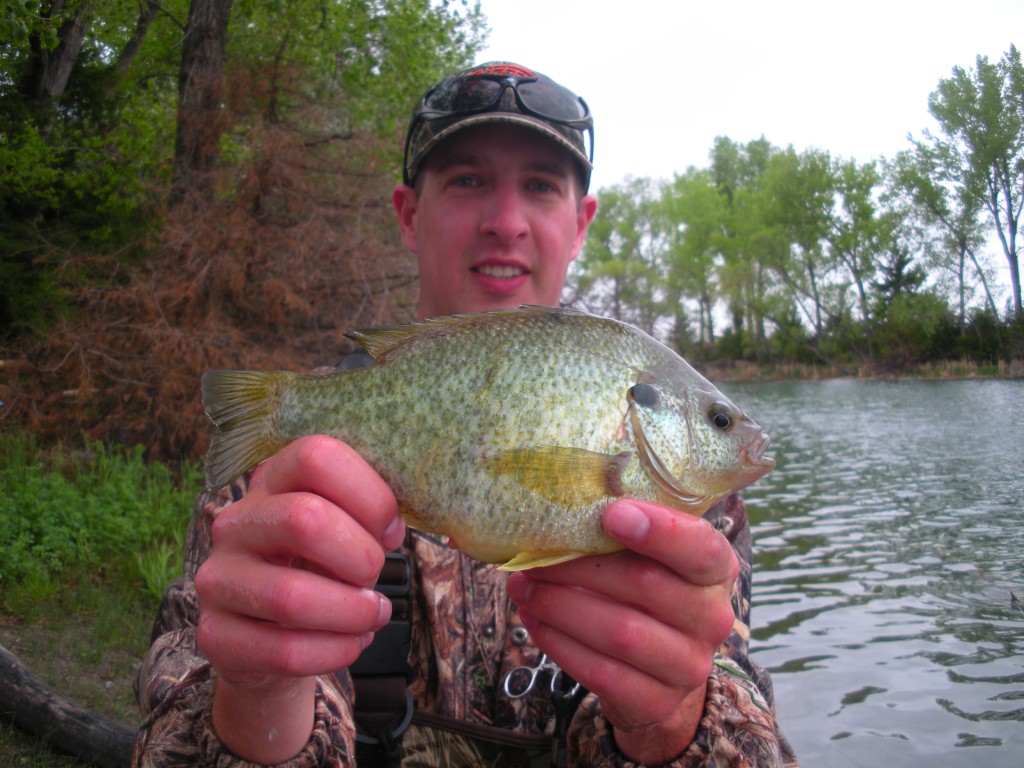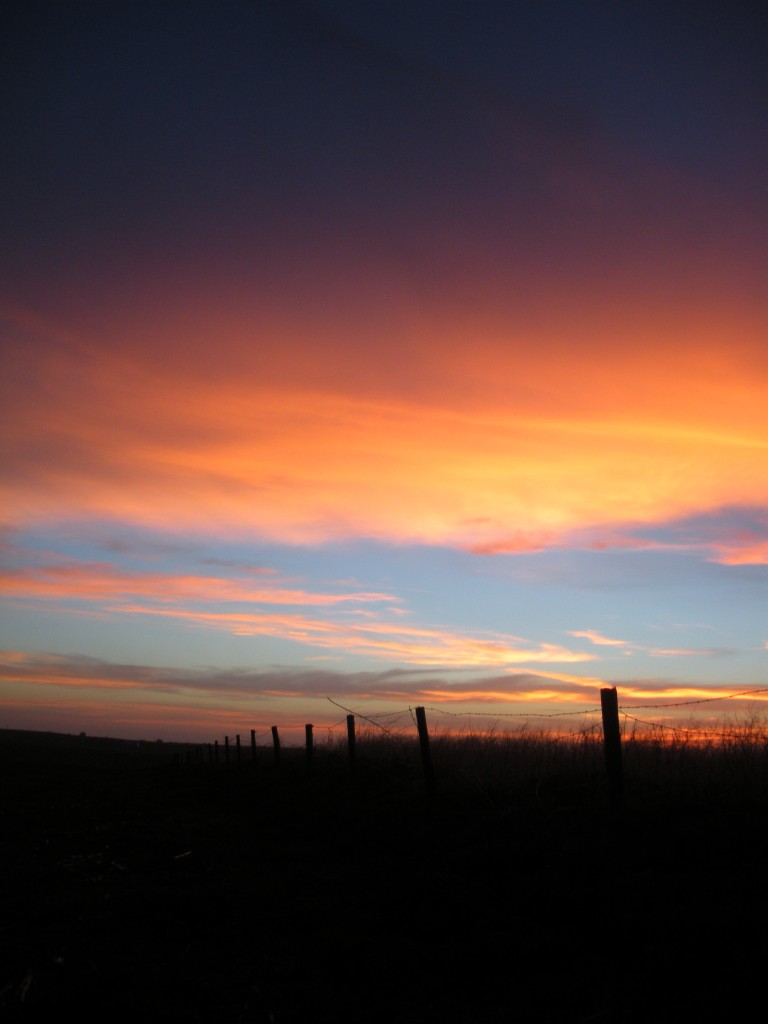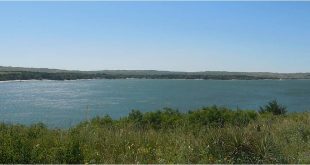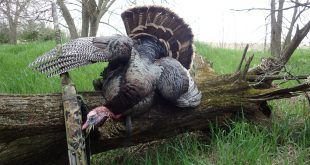A couple of months ago I warned that I would be “out of the office” as much as possible. Well, I have been; have enjoyed this spring immensely. In fact I have enjoyed it so much that I have not given a fishing report recently. Time to get caught up. . . .
Lewis & Clark
To start, I have to go back a couple weeks, back before the Memorial Day holiday. Some of the Nebraska Walleye Association folks, http://www.nebraskawalleye.com/ , had been asking me to come up and join them for some fishing on Lewis & Clark Reservoir for quite some time, and I finally made it a point to take them up on the offer. They held a tournament and kid’s fishing workship on Lewis & Clark a couple of weeks ago and I was able to spend a couple of days pre-fishing with them. I blogged about fishing the Missouri River in northeast Nebraska last fall, http://magazine.outdoornebraska.gov/2012/10/river-too/ ; there is a lot of water up there to fish and a variety of species to catch. A person could spend the rest of their fishing career on that stretch of water and not get bored with catching fish, exploring water and learning new things. Last fall I fished on the river above Lewis & Clark Reservoir; this spring spent most of our time on the reservoir itself with a short recon up the river just above the reservoir.
Believe it or not, I do not own a boat. I spend a lot of time fishing in a pair of waders, hop in the ole float tube from time to time, but in no way do I spend a lot of time fishing from a boat. That does not mean I am against fishing from a boat, and whenever I have the chance to fish afloat, I jump at it. The “game” we played on Lewis & Clark was a little bit different than standing in waders tossing baits. We mostly trolled.
With any fishing, the most important variables to control when presenting baits is depth and speed. If the fish are in 24 feet of water, chances are you are NOT going to catch them fishing 10 feet deep. Generally, you have to put your baits at the level of the fish or at least close to their level. On Lewis & Clark we trolled both lead-core and FireLine depending on the depth of water we were fishing. We wanted the baits to just deflect off of the bottom on occasion. There are a lot of variables involved with the depth various crankbaits will dive while being trolled; length of line, diameter of line, trolling speed, etc. All of that can be determined by trial and error and with any fishing there is a lot of that involved, but there are books and references like “Precision Trolling” (if you can still find copies) that will cut the learning curve. My boat partners had dialed-in on the depths, crankbaits (Berkley Flicker Shads if you must know, Berkley hard bait ), length and type of line and trolling speed. From there it was a matter of precisely trolling so our baits hit specific structures or spots where fish were holding. Electronics, depth-finder integrated with GPS, were a HUGE aid.
Effective and efficient trolling is A LOT more than just dragging lures around. We caught a variety of fish; drum, pike, and one bonus flathead catfish; plus enough walleyes, sauger and saugeye for my partners to have a respectable showing on their tournament days.
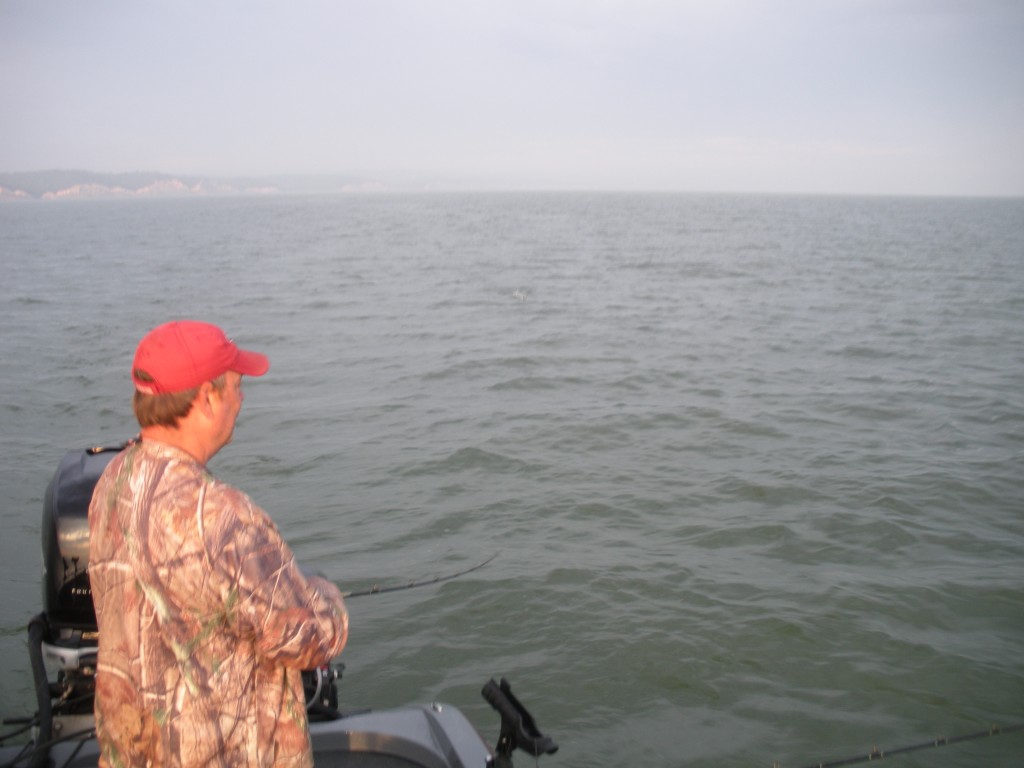
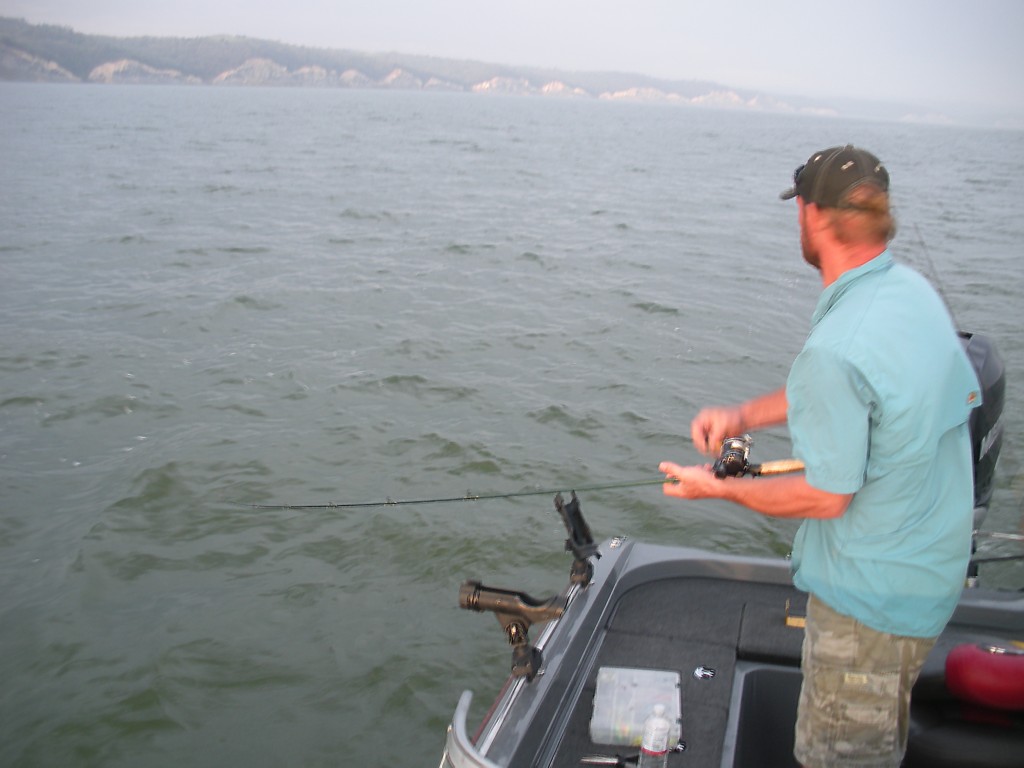
We caught a lot of walleyes/sauger/saugeyes that were this size.
Saved the bigger ones for when it counted.
Not all of them were walleyes, but they were fun to catch anyway!
By the way, trolling crankbaits for flathead catfish in reservoirs is no fluke, http://magazine.outdoornebraska.gov/2010/04/flatheads-on-crankbaits/ .
Got to show the obligatory scenic pictures. The sunrises on the water were gorgeous.
Of course we got stormed-off one afternoon.
A person can learn something from everybody they get a chance to fish with. As I said, I do not fish from a boat a lot of the time, so I learned a lot while trolling around Lewis & Clark. A big “THANK YOU” to Mike and Chad for sharing their boat with me and cutting me in on some of their pre-tournament “secrets”. Thank you to the Smutny’s for allowing me to crash at their place for a couple of nights, and thanks to everyone who provided food, beverages, and lots of stories! I loved every minute of it, thank you guys!
Ogallala Trout
If you have been reading my blog over the past couple of years you know I have taken advantage of every opportunity to do some trout fishing on Lake Ogallala and associated waters. The rainbow trout fishing there is still excellent, still as good as anywhere in the country. I did not get to spend nearly as much time there as I would have liked, but my son, one nephew, Dad and I did spend an afternoon fishing the North Platte River right below Lake Ogallala. There was not as much water being released down the river as we would have liked, and we fished during the middle of the day, but we still managed to dry off a few. Dad picked up one fish on a small crankbait (X-Rap if you must know, http://www.rapala.com/X-Rap/X%20Rap,default,pd.html?start=63&cgid=rapala-lures ), but most of the trout we caught were on a variety of drifted PowerBaits (http://www.berkley-fishing.com/products/soft-bait/powerbait). If you need a review of those techniques, here you go, http://magazine.outdoornebraska.gov/2013/03/fisherman-lake-ogallala-trout-videos/ .
The first fish I caught that afternoon was a cutthroat!
I blogged about our Nebraska state fish hatcheries raising some cutthroat trout last year, http://magazine.outdoornebraska.gov/2012/10/brooks-cutts/ . Just a few more than 1600 of those cutties were stocked in Lake Ogallala last fall and I caught one of them! They were stocked at 8-10 inches; the fish I caught had grown several more inches than that. That fish is back in there along with the other 1599 or so.
Soon after my son and I doubled-up.
And then he caught the biggest trout that afternoon.
Between all of us, we caught and released 15-20 trout. The bite lagged in the afternoon, but I did not think we did too bad considering the low flows and fishing during the middle of the afternoon. I am betting we would have done better again that evening and if we had more time I am betting we could have found some more fish elsewhere on the canal or Lake Ogallala itself.
Interstate Lakes
I have fished a lot of interstate lakes for a lot of years; in the past couple of weeks I have been back on 3 or 4 of them. The first one I had a cool, windy evening to fish; was not sure how good the bite would be. I should not have worried; the smallmouths were cooperative. The first one I caught was 14 inches and then I worked my way up with a 16-incher and then a 17! I was hoping the next one would be even larger, but I dropped back to 13 inches for the last fish of the evening.
There you go, look close and you can see what I caught that fish on (hint: that bait has already been mentioned once in this blog).
The other interstate lakes I fished with my kids and a nephew and we mostly targeted panfish. The “kids” all managed to catch rock bass larger than the ones I caught.
I am going to claim an “assist” on my daughter’s rock bass. I missed that fish once, and then went and got Emily and a couple of leeches and showed her where that Rocky was holding. She fed one leech to that fish, but got him with the second.
The water in most interstate lakes is clear to very clear. We were pretty much sight-fishing for the rock bass and pulling our baits away from small rock bass and sunfish. If you have read my blog for any time, you know I am a huge believer in big baits for big fish, but fishing in the middle of a sunny afternoon on a clear-water pit is one time I will tell you to down-size. Under those conditions, smaller, more natural baits are the only way to get bit. For example, we saw a lot of male largemouth bass guarding schools of newly-hatched fry; we left those fish alone, but if you looked, there were also larger female bass cruising around. Male largemouths do the nest-building and guard the fry for awhile after the eggs hatch. After they spawn, the females go looking for something to eat–they need to replenish their energy reserves. My son and nephew caught several of those female bass, fish up to 19 inches, again by sight-fishing and dropping small, natural, or natural-looking baits in front of those fish. Big chartreuse spinnerbaits just were NOT going to tempt those bass into biting; they were cruising, looking for prey, but with bright conditions and clear water, they quickly recognized a phony presentation when they saw one.
One other tip on those post-spawn, female bass: In small waters, bluegills and other sunfish are a primary prey for black bass. Those sunfish species spawn after the bass, and you better believe those big female bass pay attention to spawning colonies of sunfish.
We also saw channel cats cruising, even during the middle of the day, on a couple of interstate lakes. I caught a couple of those fish by dropping the same baits I was using for rock bass, bluegills and sunfish, to the bottom in the vicinity of cruising channel cats. Yep, sight-fishing works for catfish too! The cat I would have liked to catch was a 15-20-pound fish I saw cruise by one time; I waited for it to come back, but never did see it again.
We hit up a couple of other interstate lakes for some redear sunfish. Again, we typically sight-fish for the redears, but I believe we were just a week or so early for the fishing to be really good. We just did not see that many redears up in shallow water cruising around. Even the bluegills were not real active, and we had to down-size to some small beadhead nymphs to get many of them to bite. My son did scratch one 10-inch+ redear.
A couple of other comments and I will quit rambling. I have not given specifics on the interstate lakes I fished. I do not think I have to because you can figure it out. For example, I am betting many of you already know where I caught the smallmouths. Let me give you another hint, especially if you go there to fish, remember that all black bass less than 21 inches in length have to be caught and immediately released on that particular interstate lake. If you need some more hints, here is some homework for you, study these and you will know all you need to know, http://www.outdoornebraska.ne.gov/fishing/pdfs/FishForecast.pdf , http://www.outdoornebraska.ne.gov/Fishing/programs/sampling/2012/I80%20Lakes%20Grand%20Island%20to%20Elm%20Creek%202013.pdf , http://www.outdoornebraska.ne.gov/Fishing/programs/sampling/2012/2012%20I80%20survey%20summary.pdf .
Just remember, all of my best fishing spots are guarded by itch mites, ticks, mosquitoes, wild hogs, mountain loins, owls, sasquatch and rattlesnakes. I ain’t kidding about the rattlesnakes, here is a prairie rattler we found on duty in between a couple of my fishing spots.
By the way. I consider it a great day anytime I find a rattlesnake. I know I am in good country when I find one. The snake and I each went our separate ways after I snapped a photo or two. That snake did not threaten us at all, hardly rattled in fact; all it wanted to do was get to the grass and get away from us.
I will again comment about the diversity of fishing opportunities we have in Nebraska. I have not quite been from corner to corner across the state in the past few weeks, but I have covered a lot of ground, and water, in between. By my count, my fishing partners and I dried off 14 different species of fish in the process. We caught fish, a variety of fish, everywhere we fished. Right now is some of the best fishing of the year in Nebraska for a variety of species on a variety of waters across the state. GO FISH, NOW! There is so much water, so many fish, and so little time!
Where will I be next? Who knows? Somewhere down the fence line, into the sunset. . . .
I am pretty sure I will catch fish when I get there!
 Nebraskaland Magazine
Nebraskaland Magazine
